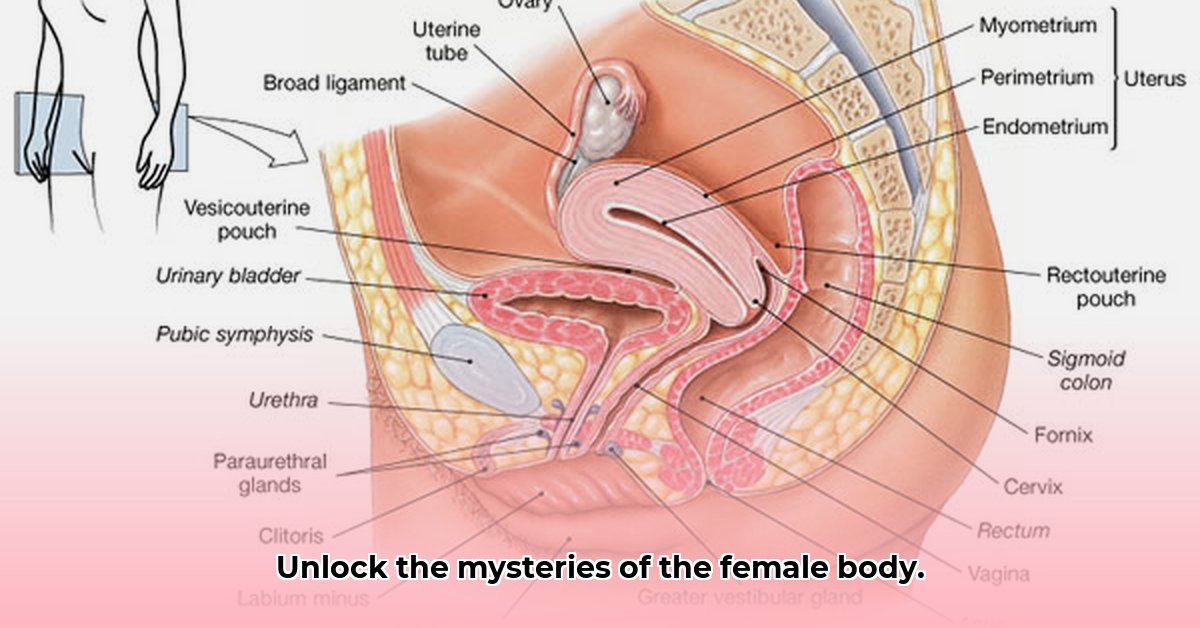Understanding the intricacies of the female reproductive system is paramount for medical professionals, students, and anyone invested in women’s health. 3D models have revolutionized how we visualize and comprehend this complex system, offering interactive and detailed representations previously impossible with traditional learning materials. This comprehensive guide delves into the world of 3D female reproductive system models, examining their strengths and weaknesses, and providing a roadmap for selecting the best resource for your specific needs. From basic overviews to advanced anatomical explorations, understanding the nuances of each model is crucial for maximizing its educational potential.
Evaluating Model Effectiveness: A Multifaceted Approach
Choosing the right 3D model requires careful consideration of several key factors. This guide employs a comprehensive evaluation system encompassing anatomical accuracy, level of detail, interactivity, accessibility, and cost-effectiveness.
- Anatomical Accuracy: The model’s faithfulness to real human anatomy is paramount. Inaccurate representations can mislead learners and hinder comprehension.
- Level of Detail: The depth of anatomical structures presented is crucial. Basic models may suffice for introductory learning, while advanced study requires highly detailed representations of organs, tissues, and vasculature.
- Interactivity: The ability to manipulate and explore the model adds a dynamic layer to learning. Features like rotation, zoom, and virtual dissection enhance engagement and understanding.
- Accessibility: Cost and ease of access are vital factors. Free online models offer widespread availability, while premium software may require subscriptions or specific hardware.
- Cost-Effectiveness: Balancing the features and benefits of a model with its cost is essential. Free models may lack advanced features, while expensive options might offer more than necessary for basic learning.
In-Depth Model Reviews: Navigating the Options
This section dissects specific models available online and commercially, highlighting their strengths and weaknesses based on the criteria outlined above. Understanding these nuances empowers users to make informed decisions based on their individual needs.
Sketchfab Models: Accessibility and Simplicity
Sketchfab hosts a variety of 3D female reproductive system models, ranging from simplified overviews to more detailed representations. Their free accessibility makes them valuable introductory resources. However, the level of detail and interactivity may be limited compared to premium options.
- Simplified Models: These offer a basic introduction to the system’s major components. Their ease of use and visual appeal make them ideal for beginners.
- Enhanced Models: Some Sketchfab models provide greater anatomical detail and improved navigation, allowing users to explore specific structures more closely. While not as comprehensive as premium anatomical software, they offer a valuable intermediate step for learners.
BioDigital Human: Interactive Exploration (When Available)
BioDigital Human aims to provide a highly detailed and interactive 3D model of the human body, including the female reproductive system. While its potential is significant, its functionality relies heavily on WebGL compatibility and a stable internet connection. Technical issues can hinder accessibility. When functioning correctly, it offers robust exploration capabilities.
Premium Anatomical Software: Depth and Precision
Platforms like Visible Body offer subscription-based access to highly detailed and interactive 3D anatomical models. These models excel in accuracy, detail, and interactivity, providing features like virtual dissection and layered views of different anatomical systems. However, the cost can be a barrier for some users.
3D-Printable Models: Hands-on Learning
Cults3D and other platforms offer 3D printable models of the female reproductive system. These provide a tangible learning experience, allowing users to physically manipulate and examine the structures. However, the quality and accuracy depend on the 3D printer and materials used. This approach requires an investment in printing equipment and expertise in model preparation and printing.
Choosing the Right Model: A Personalized Approach
Selecting the ideal 3D model requires a nuanced understanding of your specific learning objectives and resource constraints. Consider the following questions:
- What is your learning goal? A basic overview may suffice for introductory purposes, while advanced study requires detailed and interactive models.
- What is your budget? Free resources like Sketchfab models can be valuable starting points, while premium software offers advanced features but comes at a cost.
- What level of interactivity do you require? Simple visualizations may be sufficient for some, while others benefit from the ability to manipulate, dissect, and explore the model in detail.
- Do you have access to 3D printing equipment? If so, printable models offer a unique hands-on experience.
By carefully considering these factors, you can choose a 3D model that effectively supports your learning journey and enhances your understanding of the female reproductive system.
Future Directions: Expanding the Potential of 3D Models
The future of 3D modeling in medical education is promising. Advancements in virtual and augmented reality offer the potential for even more immersive and engaging learning experiences. Integrating these models into curricula and clinical practice can transform how we teach and learn about the human body. Furthermore, continued research on effective learning strategies utilizing 3D models will be crucial for maximizing their impact. Addressing accessibility challenges and ensuring accurate representations will pave the way for wider adoption and contribute to improved healthcare outcomes.










